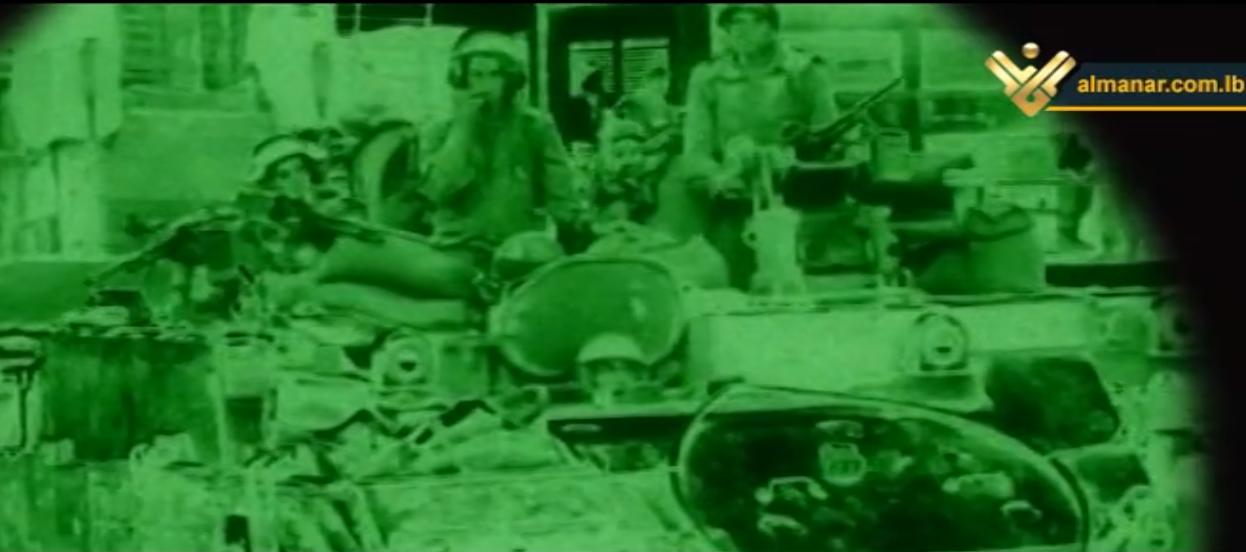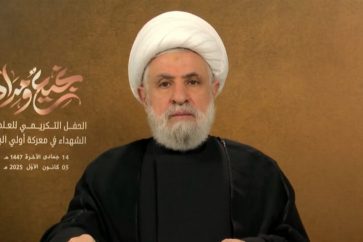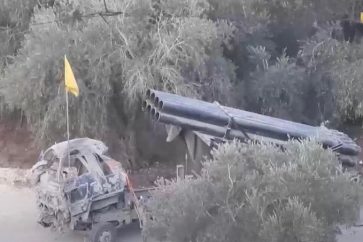Every town in south Lebanon has a heroic story to tell from the July War in 2006. Ayta Al-Shaab, however, has many stories. Not only did the border town did witness the raid which led to the capture of two Israeli soldiers at the beginning of the 33-day war, but also its fighters taught the Israeli invaders harsh lessons about bravery and land defending.
Wadi Al-Oyoun, a documentary produced by Al-Manar, talks about the heroic battle which took place when Resistance fighters repelled an attempt by Israeli occupation forces to advance towards the southern border town of Ayta Al-Shaab on the fourth week of the war in 2006.

The name of the documentary refers to the name of a valley in the vicinity of Ayta Al-Shaab, Wadi Al-Oyoun, where 14 members of Israeli Combat Engineering Corps were humiliated by Hezbollah fighters. The battle was the last Israeli attempt of land incursion during July War. The blow which occupation forces were dealt during the assault, kept the IOF from repeating such an attempt!
The documentary contains testimonies by a Resistance military commander and three other fighters who took part in the battle. It also includes testimonies aired by Israeli media of occupation soldiers who were injured during the Israeli assault.
Ayta Key Town
Since the start of the war on July 12, 2006, the axis of Ayta Al-Shaab and the surrounding border towns witnessed several attempts of land incursion by IOF, who tried hard to secure even one military achievement in the area where the two Israeli soldiers were captured by Hezbollah fighters.
The town is strategic for the occupation forces since it includes several Israeli military posts and settlements, a commander in the Resistance says in the documentary.
“Ayta represented one of the major points of engagement between the occupation forces and the Resistance fighters. The two Israeli soldiers were captured in the town’s Khallet Warde, or area 105 as called by IOF. There had been, throughout the 33-day war, desperate attempts by the occupation army to infiltrate into Ayta, in a bid to secure any achievement and boost its forces’ morale,” the military commander of Hezbollah’s command 110 says.
“Hezbollah knew well that IOF will try to enter Lebanon from the path where the two soldiers were abducted, and the Israeli army also knew that this path would be dangerous, and that the Israeli forces would face both IEDs and anti-tank missiles,” an Israeli reporter says.
“The Israeli enemy repeatedly sent its elite forces to Lebanese territories, but they were met by harsh resistance by Hezbollah fighters who were positioned everywhere in Ayta and the surrounding area in a bid to repel any offensive,” the commander says.
The Resistance’s surveillance unit had major role in foiling Israeli attempts of land incursion during the war, according to the documentary.
“The enemy repeatedly tried to deceive Resistance fighters by making fault movements in a bid to cover over other infiltration attempts. However, our fighters were vigilant to all movements by IOF,” says a Resistance fighter of the surveillance unit, known with his nom du guerre “Haroun”.
Wadi Al-Oyoun Battle

Talking more specifically about the abovementioned battle, the occupation army on August 6, 2006, took a decision to infiltrate into Ayta from its back front. It dispatched a unit from the Israeli Combat Engineering Corps in a bid to dismantle the IEDs planted by Resistance fighters and therefore open the road for occupation forces to get into the town.
“We monitored strange movements near Khallet Warde at night of that day and we informed the leadership about these movements,” Haroun says.
“The mission was simple but also dangerous in an exceptional way. The Israeli army command sent a unit of the Combat Engineering Corps in a bid to open the road for infantry soldiers to infiltrate. The unit was composed of fourteen members in three D9 armored bulldozers and two Puma combat engineering vehicles,” the Israeli reporter says.
“It was strange that a small force was sent to an area where the two soldiers were abducted few weeks earlier. The area was also planted with IEDs and couldn’t be surveilled by Israeli forces. How come that they went against to that area to repeat the same faults?” the reporter wonders.
“The move to send the Israeli unit to that area represents the Israeli leadership idiocy, since the occupation army through clashes with Hezbollah fighters throughout the previous days of the war knew very well that the Resistance completely controls the area and its fighters were fully ready to confront any attempt of advance by Israeli forces. This miscalculation led the Israeli engineer unit to be ambushed by Hezbollah fighters.” the commander says.
Narrating the start of the battle, the Israeli reporter says: “The mission started at 19:00 of August 6, 2006, as the soldiers tried to open path that it 10 km in depth inside the Lebanese territory. They were tasked to dismantle the area of explosive devices.”
After the occupation forces entered the Lebanese territory at that day, and as they reached an area called Marj Debel, they lost contact with the Israeli leadership and all the other forces that were backing them in the surrounding area.
The Israeli unit was backed by paratroopers who were positioned in the overlooking hills. However, and due to the nature of the valley, the paratroopers couldn’t have any contact with the unit and consequently, couldn’t offer any kind of help.
The only two calls that the unit manage to receive were: The first call was that “Hezbollah discovered you and they will hit you,” while the second call urged the Israeli unit to stay vigilant against any attempt to capture new Israeli soldiers.
At 22:00 of that night, the Israeli unit reached Wadi Al-Oyoun and Hezbollah leadership ordered the anti-tank unit to hit Israeli forces and the infantry unit to engage with IOF.
“We targeted the first Israeli armored bulldozer with an anti-tank missile, forcing the occupation forces to stop,” says Hezbollah fighter of the anti-tank unit, who was known with his nom du guerre “Amin”.
Shortly after that, other Israeli vehicle got through an explosive device and was damaged. The Resistance’s infantry unit was then ordered to engage with the IOF who got out of the vehicles and were terrified. They ran and hid behind trees and rocks in the area.

“They were surprised by us. They were hysterically shooting everywhere out of fear. They even shot at their comrades due to the state of confusion which was prevailing. The Resistance fighters were just few meters apart from the occupation forces and the clash lasted for hours until after midnight when the enemy forces hid behind trees and rockets in the area,” says “Kamal”, Hezbollah fighter who took part in the clash.
“We could do nothing but to run. We ran and ran. The shooting which took place at that night was unexpected,” one of the Israeli soldiers who took part in the battle says.
At 02:00 on August 7, 2006, the occupation forces escaped to one of the surrounding hills and set up barricades in a bid not to be exposed to Hezbollah fighters’ fire.
“After hours of fighting, with many injuries and at least two damaged vehicles, the Israeli unit realized that they couldn’t advance,” the Israeli reporter narrates the battle.
The communication between the Israeli unit and its leadership was then reestablished. After the sunrise and throughout the day, the IOF were ordered not to move. The decision came after the sunset to retreat. However, this decision meant that they would again take the path of Wadi Al-Oyoun and hence, to be again under the Resistance fire.
“As they reached Wadi Al-Oyoun, the unit was targeted with another anti-tank missile which hit the Puma armored vehicle. New clash erupted as Resistance fighters engaged with the IOF. Their movement in the second night totally differed from the first night. They were quickly moving, clearly they were escaping,” “Kamal” says as he narrates what happened in the second night of the battle.
Below are excerpts of the documentary:
Report translated and edited by Marwa Haidar
Video subtitles prepared by Mohammad Salami
Source: Al-Manar




